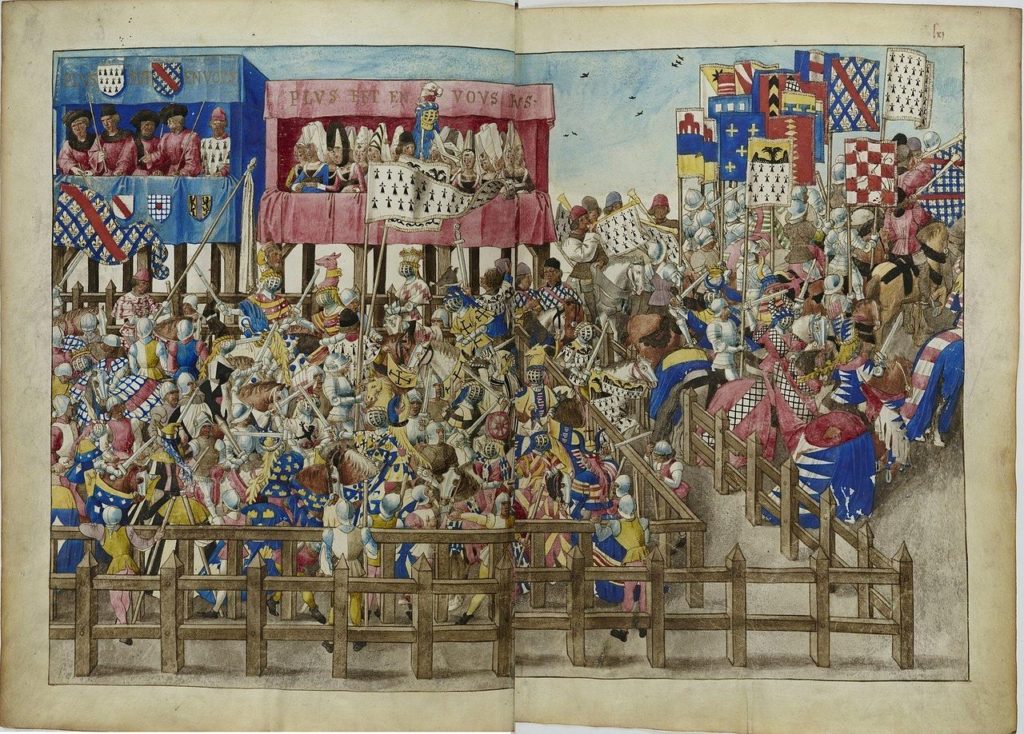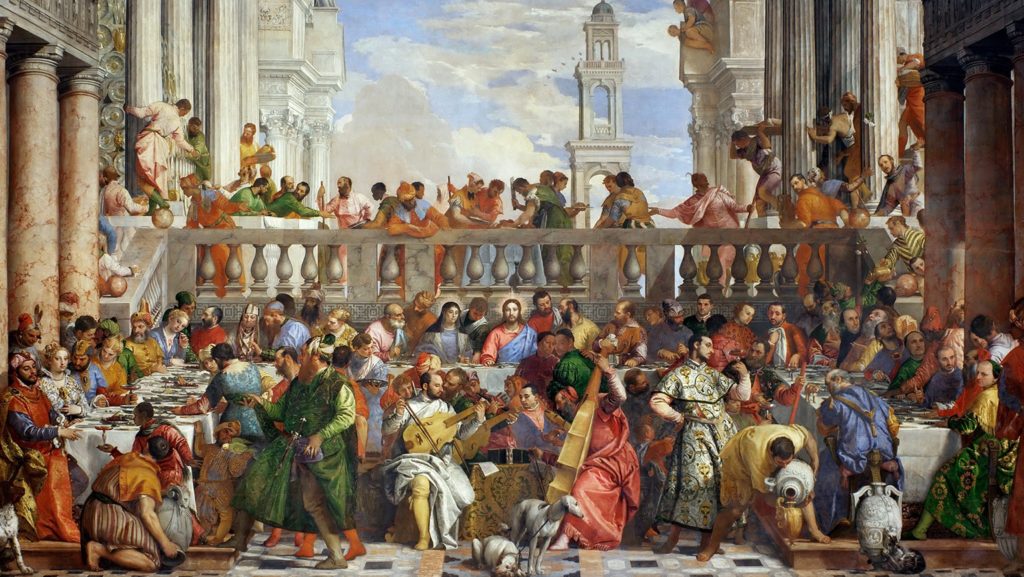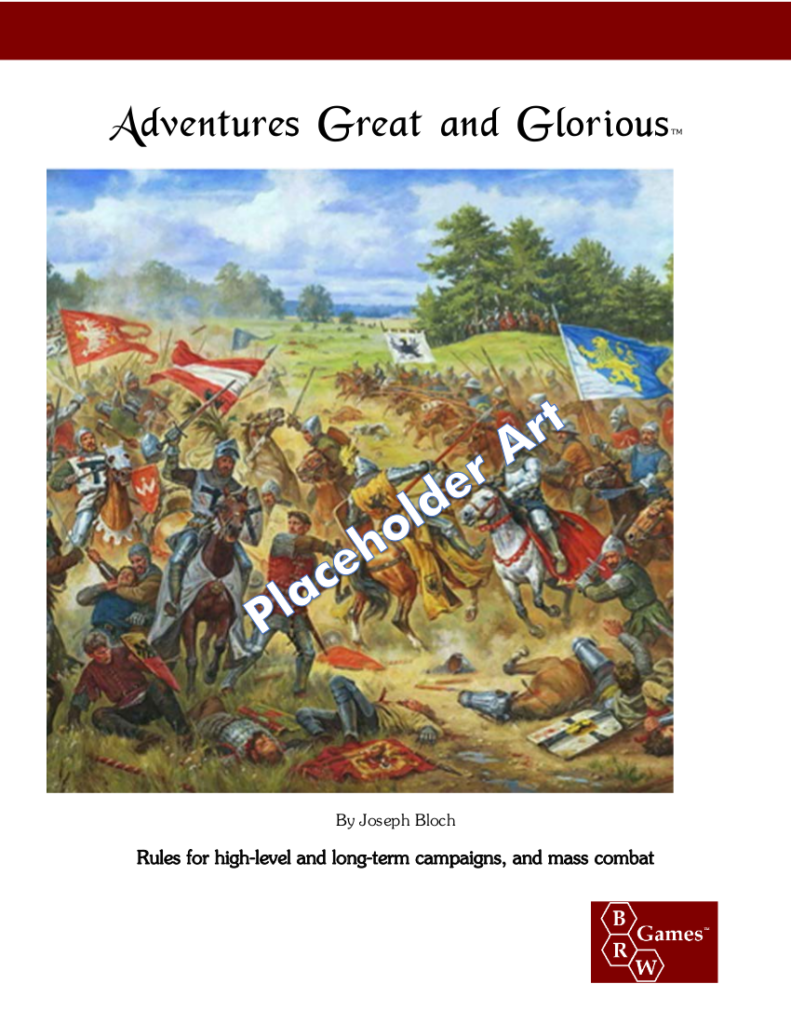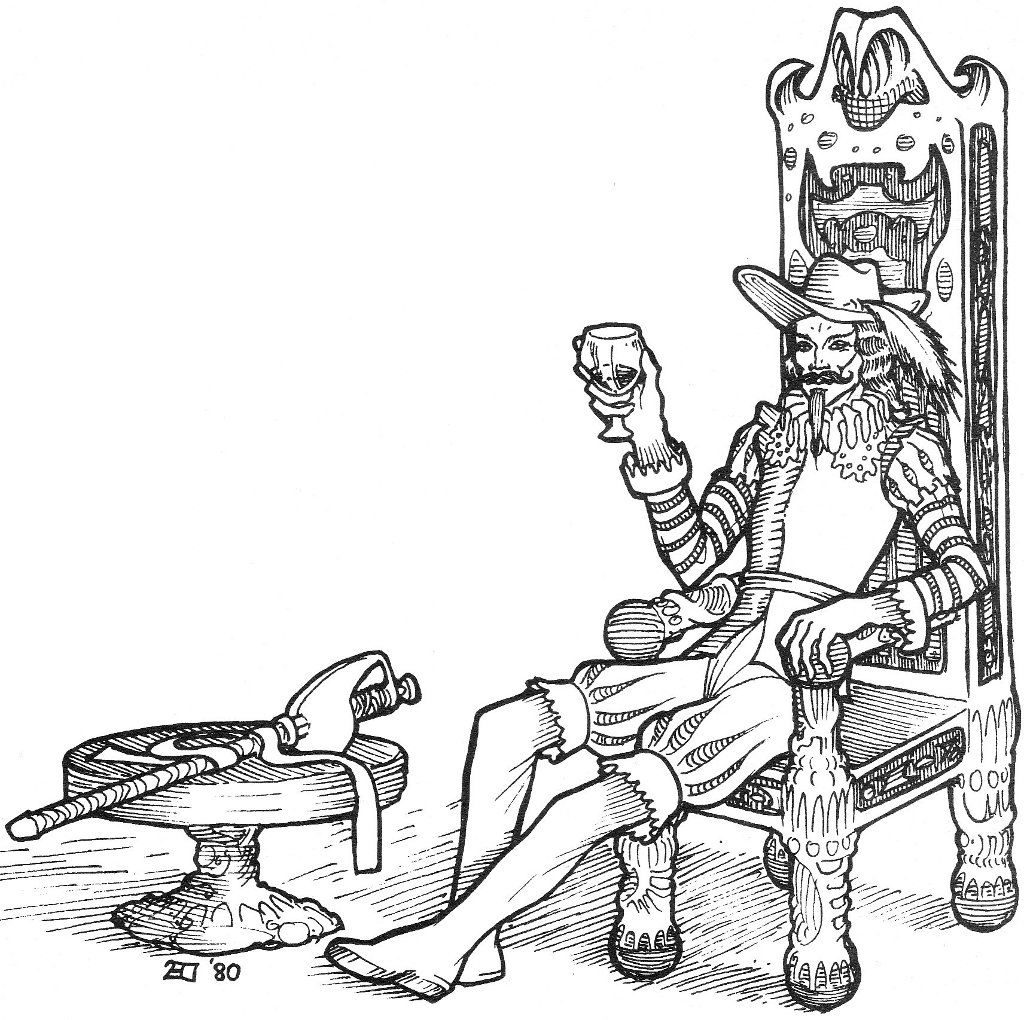As students of European history will know, pre-modern Europe is divided into several different periods, collectively known as the Middle Ages and the Renaissance.
The beginning of Medieval Europe is called the Early Middle Ages (aka the Dark Age), c. the 5th through 10th centuries CE. This is the era after the fall of the western Roman Empire, the Migration Period of the Germanic tribes, of Charlemagne and the Frankish Empire, the birth of the Islamic Caliphate, Anglo-Saxon England, and of course the Viking Era. The stirrup (which allowed much easier combat from horseback) only found its way to Europe towards the end of this period.

The High Middle Ages followed, from the beginning of the 11th century CE to the middle of the 13th. This period saw the battle of Hastings and the Norman conquest of Britain, the peak of the Holy Roman Empire, the Crusades, the birth of the Kingdom of Hungary and the beginnings of the culture of chivalry in western Europe. It was in this period that the first tournaments (as we think of them) were held, and in southern France the troubadours gained their fame. Urbanism returned.

Afterwards came the Late Middle Ages, from the mid-13th century CE through the end of the 15th century. This was a period of crisis and decline, with the Black Death, various peasant revolts, the Hundred Years’ War and the Wars of the Roses, the birth of the Duchy of Moscow (the precursor to modern Russia), the Reconquista of Spain and the Crown of Aragon, and, of course, the discovery of the Americas.
It was thus that the Renaissance began, from the year 1500 CE to the 17th century. It was a period of great art, from Michelangelo to DaVinci, authors such as Shakespeare and Machiavelli, monarchs such as Henry VIII, the Protestant Reformation, the birth of Humanism as a philosophy, and the beginnings of the scientific method itself. The printing press was introduced and the demand for books skyrocketed to meet the supply.
Of course, these are vast over-simplifications, and different parts of Europe advanced at different paces. The Renaissance started earlier in Italy than, say, eastern Europe. But as general historiographical periods, they serve.
But where does Greyhawk fall into this scale? Different people, and especially different artists, will have a different feel for just how advanced the Flanaess is, in terms of culture. If we take the fall of the Suloise Imperium as a benchmark similar in significance to the sack of Rome by the Gothic leader Alaric, then the year 576 CY is the equivalent of our year 1408 CE. Right smack dab in the middle of the Late Middle Ages, at the cusp of the birth of the Renaissance.
I think however, like our own Europe, the various realms and cultures of the Flanaess proceed at different paces. Let’s explore.
The city of Greyhawk I always see as a city of the Renaissance, perhaps equivalent to Florence. Its close rivals, Dyvers and Harby, would be, at least on a cultural level, equivalent to Genoa and Milan. Rel Mord (the capital of Nyrond) and Niole Dra (capital of Keoland) might be in that same rarefied status, but few others.

The High Middle Ages would have most of the Flanaess in its grip; Furyondy, Keoland, Nyrond, Veluna, Almor, and the Great Kingdom. The exceptions in the central Flanaess would be the Horned Society, which would be a little further behind, and Iuz and the Bandit Kingdoms, which would be back in the Early Middle Ages if not the Dark Age. Those realms on the periphery of civilization, such as the Suel barbarians on the Thillronian Peninsula, and the Flannae and Baklunish nomads in the north would be Dark Age cultures at best, although the Ice, Frost, and Snow barbarians would be edging towards the Early Middle Ages, with their centralized monarchies replacing local tribal leaders.
Culturally, I could see the elven territories (Celene and Ulek) on the cusp of the Renaissance because of their tolerant and ancient natures, but never going past that state, owing to the inherent cultural conservatism of a people with a lifespan measured in centuries. Change comes slowly to gerontocracies.
This categorization could have implications in-game as well. Aside from options for dress, different weapons could be available (or considered passe) in different lands, based on their level of technology. Plated armor could be only available in more advanced places, while rapiers and bucklers would be more plentiful than large kite shields and two-handed swords in a more civilized locale. More powerful magic items and spells could be found only in the most advanced places, and even the craftsmanship of jewelry and other objets d’art could vary.
Naturally, other DMs could have different ideas when it comes to the level of culture and technology. What sort of Greyhawk do you envision when it comes to parallels with the history of Europe?
Don’t forget to check out my Adventures Great and Glorious Kickstarter going on right now! High-level rules for classic RPGs, dealing with domain management, courtly intrigue, mass combat, and much more. Compatible with most old-school RPGs.











Another delicious classic topic! I’ve never dwelled too long on cultural levels, though I’ve spent much time talking to other Greyhawk fans about it. Your views on different parts of the Flanaess and where they are at in development is good to me. The one area I’ve had the most trouble is in ship making technology. I really can tell for certain that oared ships are less advanced than those without. The bigger the ship I assume the more historically advanced they are, but in D&D there seems to be no benchmarks. It’s all there. Much like with weapon and armor craft, it takes a real conscious and scholarly effort to enforce this, so in the end it all gets thrown in there short of firearms.
There’s so many other areas to consider of course. Art, math, writing, building, agriculture, etc. The more detail, the more immersive the game.
About ships, the Wolly Bay is much like the Mediterranean. The ship technology of DnD is much like that at Lepanto, with galleys the common warship and the galeass the proud man-o-war. Both are powered by both sails and oars, as required on a sea that is often becalmed. But at the same period in European history saw carracks, and perhaps even early galleons, oceangoing ships. These would occur in regions near the oceans, mainly the Aerdi East and Lordships of the Isles. But for ocean trades, these ships likely exist in the Wolly Bay area as well. There, they would be risking priate attacks as soon as the sea is becalmed, which feels very fitting.
I actually think that Greyhawk has a fairly uniform level of technology in keeping with its permanent medieval stasis, especially since electricity on Oerth doesn’t really work the same way it does in the real world and gunpowder, fossil fuels and steam power don’t work at all, which helps to prevent industrialization.
I also think that demihumans would spread technology to human peoples who didn’t otherwise use it in the real world. Given that demihumans and humanoids are just as spread around the world as humans are, any human cultures that didn’t manufacture weapons on their own could just as easily acquire them in trade with dwarves or gnomes, or as war prizes in fighting off orc and ogre raids. Just as the real-life First Nations acquired guns from European settlers in exchange for furs, their Flan equivalents could buy swords, shields and steel arrowheads from dwarves who fill in for the Europeans.
Many Flan, Touv and other human cultures might eschew metal armor more because it’s impractical with their lifestyles or homelands than because they don’t know what it is-and apparently some historical First Nations did use their own forms of wooden body armor pre-contact, so it’s entirely likely that their Flan counterparts would do the same, albeit acquiring their metal armor in trade or in a few cases even crafting it themselves.
And as a sidenote, some “primitive” peoples might still develop weapons and armor that work about as well as steel equipment. The 2E Monstrous Manual is full of references to various monsters’ hides and shells being usable as armor. The armorers in these societies might outfit soldiers with armor made of ankheg shells or gorgon hides!